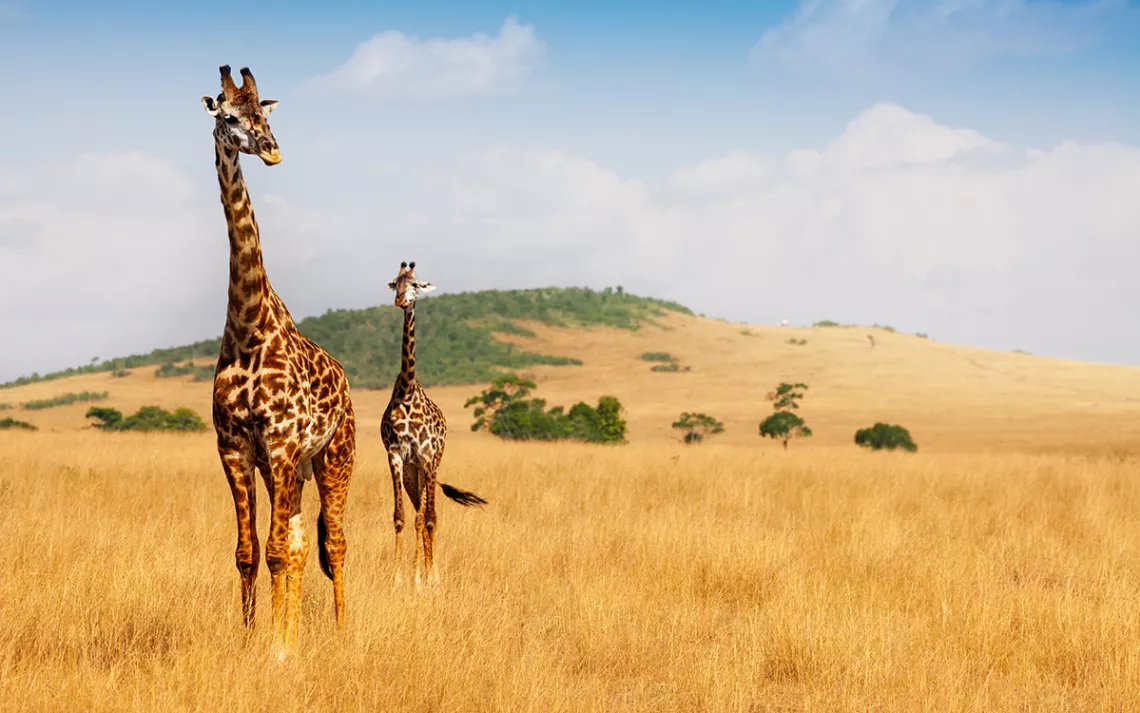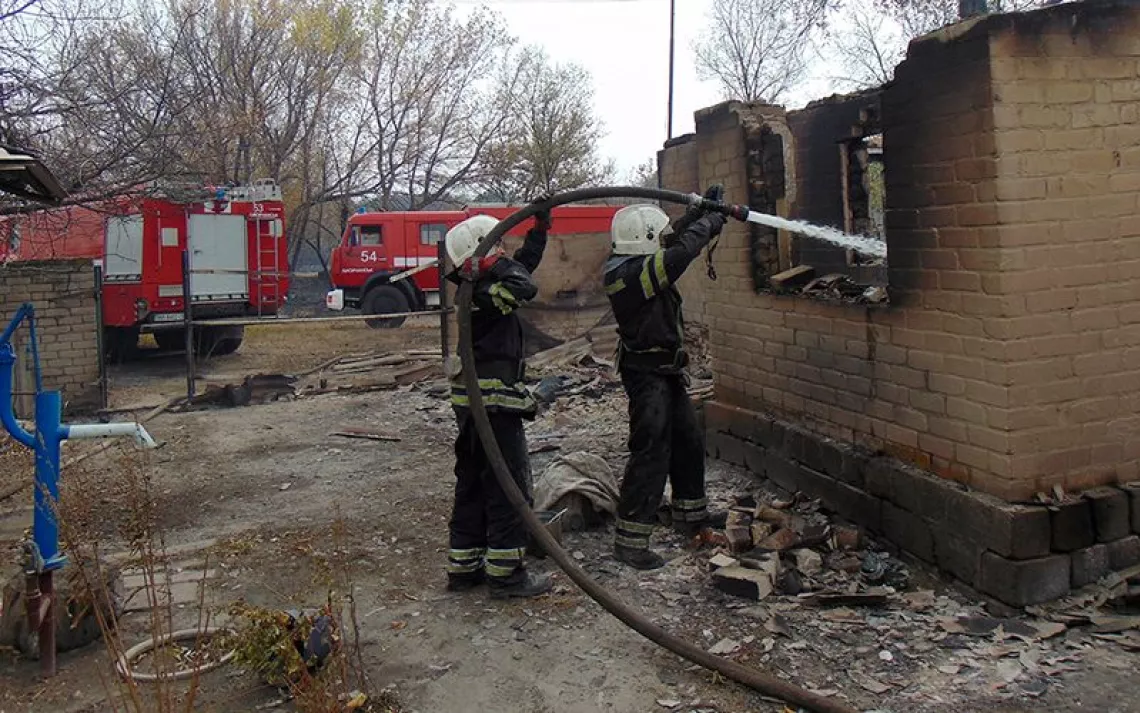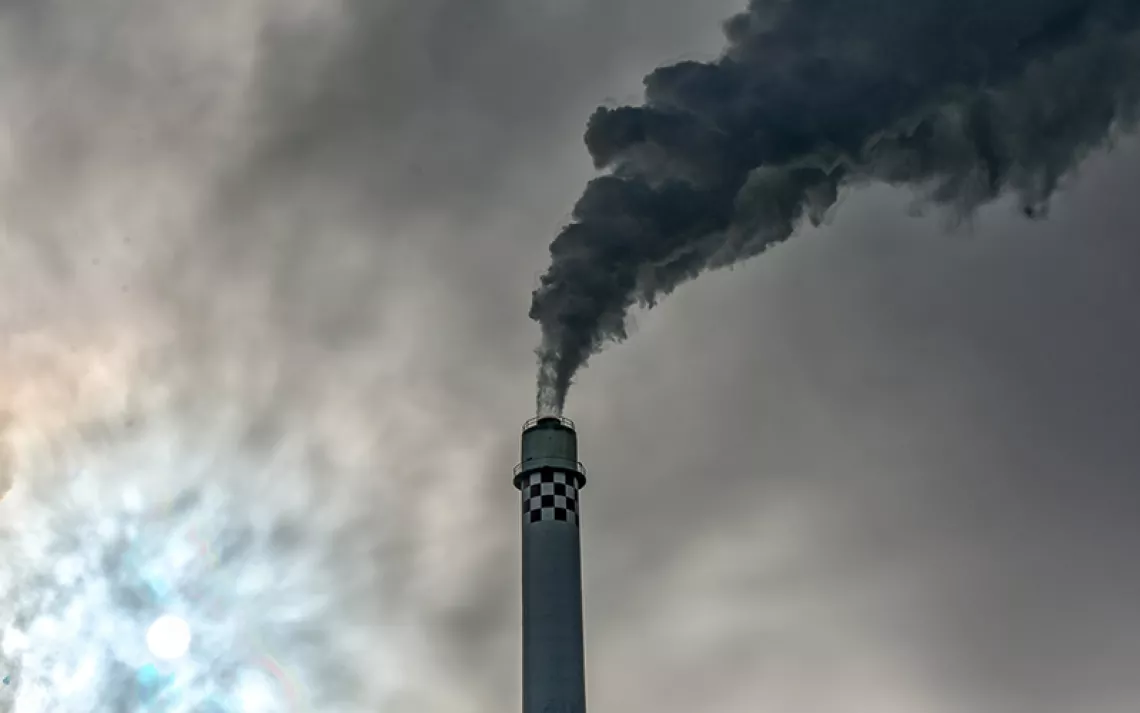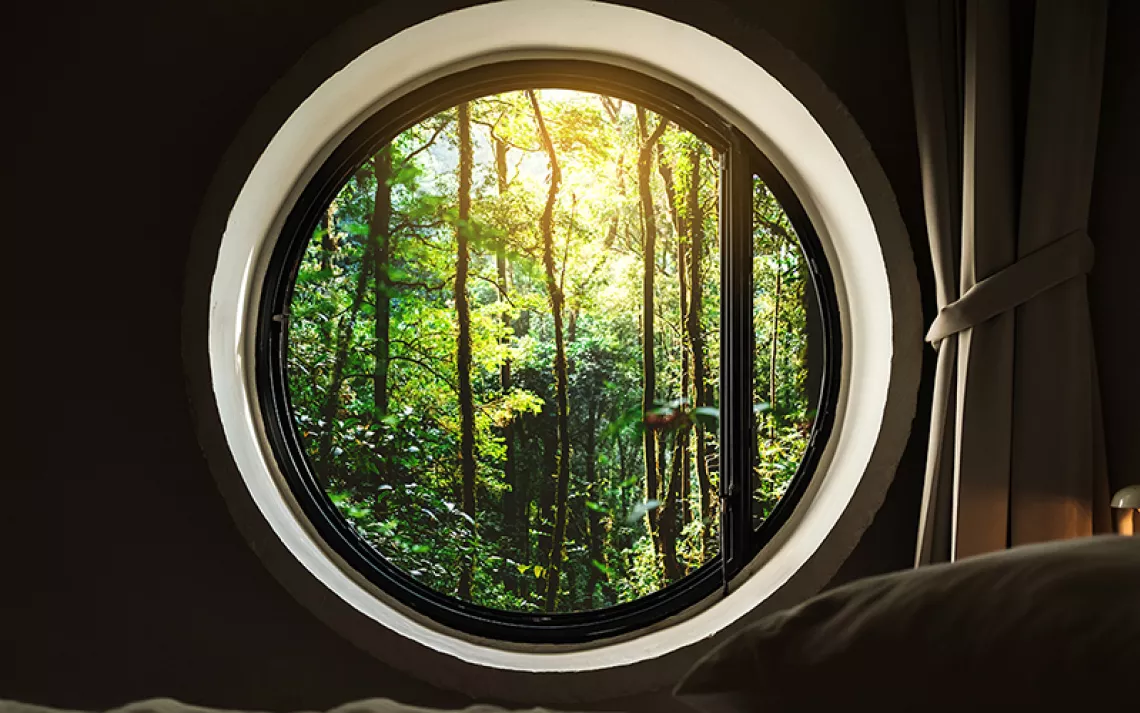The Demise of Safari Travel Could Hammer African Conservation
Community conservancy dollars to protect animals is drying up

Photo by SerrNovik/iStock
If you’ve ever watched a wildlife documentary, you can probably conjure the scene in your mind: Wildebeest gather in thick crowds on the banks of a river in Africa, keen to reach the fresh rain-fed grass on the far bank. Below them, the chocolate-colored waters swirl around boulders the size of cars. Eventually, one animal, braver than the rest, takes a leap of faith into the river. Immediately others follow. As they do, a squad of giant crocodiles rises out of the depths and their prehistoric jaws snap shut on the legs of terrified wildebeest.
The sight of East Africa’s wildebeest attempting to cross the Mara River, which separates the Serengeti National Park in Tanzania from the Masai Mara National Reserve in Kenya, is such a well-known wildlife spectacle that every year thousands of safari tourists flock to Kenya and Tanzania to see it in real life. Except, that is, this year, as the pandemic has ground travel to a halt. Now, the utter collapse of international wildlife tourism could put those animals in jeopardy since a great deal of wildlife conservation in East Africa, and Kenya in particular, is funded through tourism revenues.
“This will probably be the first time in a century that there have been no tourists on hand to witness the wildebeest migrating through Kenya’s Masai Mara,” says Riccardo Orizio, the Italian-born CEO of the Kenya-based safari and conservation organization Saruni.
Safari tourism—and by extension conservation—is big business in Kenya. Each year, safari tourism generates millions of dollars for the Kenyan economy, and these revenues are what have allowed the government and private stakeholders to put an impressive 19 percent of Kenya’s land in some form of protected status. These protected lands take the form of a string of state and local authority-run national parks and reserves, including well-known parks such as the Masai Mara, Amboseli, and Tsavo. Protected areas also include a large and ever-growing number of community-run wildlife conservancies.
While the national parks and reserves are largely funded by the central government or local councils, the community conservancies are a different thing altogether. The roughly 160 community conservancies across Kenya essentially operate as private wildlife reserves, and in the 30 years since they first began appearing on the landscape, they have utterly revolutionized wildlife conservation there.
The exact method of operation varies slightly between each conservancy, but in general they are joint operations between local communities and safari tourism partners. Communities living in wildlife-rich (and often employment-poor) areas of Kenya lease out their land to safari and conservation groups for a set monthly fee. The land is then managed in a way that is of benefit to wildlife (which get to roam and thrive), local communities (which receive the cash leases and sometimes jobs), and safari tourists (who get to see the animals). These conservancies have ensured that previously unprotected wildlife habitat becomes a safe home to Kenya’s classic mega-fauna. In almost all areas with a conservancy, wildlife populations are increasing while local families usually receive a set monthly income through the fees paid to lease the land.
Orizio explains how his company, Saruni, helps to conserve over a million acres of land spread between four different conservancies. “Saruni pays out US$650,000 a year in land leases and conservation-related programs across our four conservancies. That money is generated entirely through tourists visiting our safari camps and paying conservation fees."
Even in the best of time, tourism is normally a fickle affair, and tourism in Africa is even more susceptible to fashion whims and government travel warnings than most places. Now, the pandemic shutdown poses an existential threat to the Kenya model of wildlife conservation.
“Since the start of the pandemic, there has been a total and utter tourism crash,” says Calvin Cottar, owner of the Cottars 1920’s Safari Camp and one of the founders of the Olderkesi Conservancy, which protects 7,000 acres of wildlife habitat adjacent to the Masai Mara National Reserve. “There is not a single tourist in any of East Africa’s national parks, reserves, or conservancies.”
Cottar says that if there are no tourists, then the conservancies aren’t able to generate any money, which in turn means that land leasing fees cannot be paid to local communities—all of which could prove devastating to the community conservancy model. “You cannot tell a poor man that you can’t pay him the money he needs to feed his family,” Cottar says. “But the reality is that right now we [the conservancy movement in Kenya] simply cannot afford to pay our leasing fees. And this means that we are now in danger of losing the trust of local communities. I think that there’s now a 100 percent chance that some of the conservancies will start to collapse.” With an estimated 70 percent of Kenya’s wildlife living outside of official state-managed national parks and reserves, the collapse of the community conservancies would be very bad news for wildlife.
Right now, Orizio says, his company has “zero clients, which means zero dollars. So how are we going to continue to pay to preserve all this land?”
Everyone involved in the conservancy movement in East Africa agrees that it’s unlikely that there will be any significant tourism income before the middle of 2021. The conservancies have been left scrambling to try and make ends meet and keep land lease fees up to date.
In most cases, local communities understand the difficulties of the current situation and are doing all they can to help. The problem is that many of the families in these communities live on the edge of poverty and simply cannot afford to wait months to receive land lease fees. If they don’t get their monthly lease fees, then school fees cannot be paid and mothers cannot provide sufficient meals for their children. For the moment, many communities have agreed to a 50 percent, year-long reduction in lease fees.
The danger is that if tourism doesn’t pick up again soon, then local communities will lose faith in the conservancy system and will have little choice but to turn their land over to other uses such as cattle ranching or farming. In that scenario, wild animals will end up being removed from the land.
Nelson Ole Reiyia Lemutaka—one of the founders of the Nashulai Maasai Conservancy, which, unusually among the East African wildlife conservancies, is completely Maasai-run—says local communities are already beginning to voice frustration with the situation. “As tourism money has dried up and the conservancies can no longer afford to pay leasing fees, there is a real danger that poaching and incursions into conservation areas will increase,” he says.
To keep that from happening, the conservancies and safari companies are working to come up with new ways to generate revenue. Cottar has been busy appealing to former guests of his safari camp for financial donations to help the Oldereski Conservancy stay on its feet. By mid-May, Cottar and the conservancy team had raised $70,000 of their annual $200,000 operating costs through donations. Meanwhile, Saruni, alongside many of the other safari companies and conservancies around the Masai Mara, have launched an “adopt an acre” program in which a $35 donation will pay the lease fees on one acre of land for a full year.
The Nashulai Maasai Conservancy has been taking a different approach. Its income stems more from grants and donations than tourism, and so it has been less impacted by the disappearance of tourists. When the coronavirus pandemic hit, the Nashulai staff quickly established a crowd-funded community-feeding program that provides food staples to the most vulnerable households in the Mara region. “We started by feeding 500 households,” Reiyia Lemutaka says, “but now the program has grown and we are providing essential foods to over a thousand households in the Mara region.”
Even if the conservancies do survive the tourism downtime, Cottar thinks this global crisis will force a reconsideration of how this particular conservation model works. “It cannot be based on tourism alone. It’s just too fickle,” he says. “So, we have to start asking the question, What is the value of biodiversity”?
 The Magazine of The Sierra Club
The Magazine of The Sierra Club



